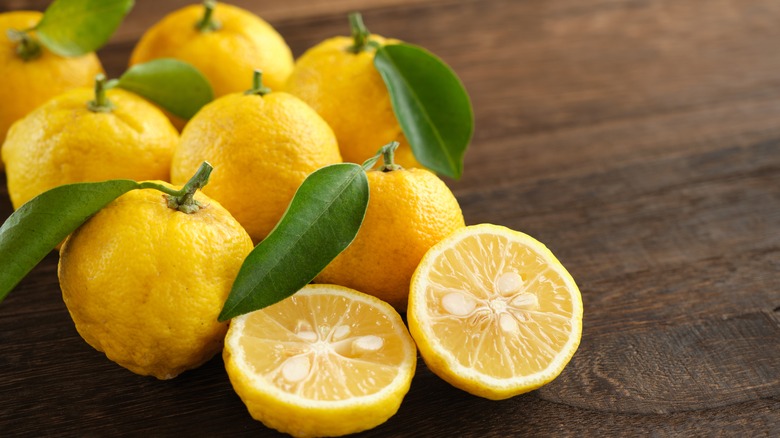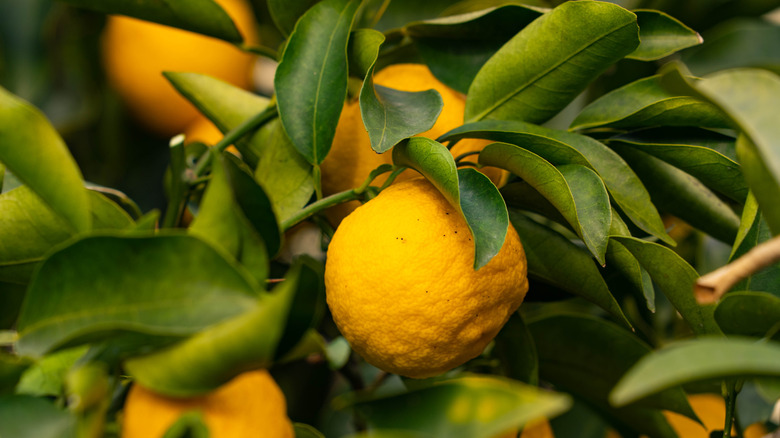Why Yuzu Fruit Is Important In Japanese Cuisine
Citrus fruits are known for their bright and acidic flavors and are commonly squeezed in various recipes or eaten on their own. Mandarin oranges, lemons, and grapefruits are examples of such fruits. Over in Japan, there's another type of citrus fruit that's commonplace in desserts, cocktails, and savory entrées, according to Kobe Jones — yuzu fruit.
According to Everyday Health, yuzu fruits score high on the tart and citrus flavor notes and are somewhat reminiscent of a grapefruit. Its appearance is that of a round mandarin orange with bright yellow colors and can be found all over East Asia.
Per Healthline, yuzu fruits contain many health benefits, but let's start with the basics. 3.5 ounces will net you roughly 53 calories, 13 grams of carbs, and vitamins C, A, and B6. These fruits may also help to ensure proper blood flow, lower cholesterol levels, and strengthen bones. If that doesn't sound enticing enough, you'll likely find yuzu in plenty of skin care products, as it helps with "skin lightening and collagen synthesis."
Health benefits and citrus tastes aside, this fruit has a significant impact on Japan's culture. Here's why.
Not just used for cooking
According to Kobe Jones, yuzu fruits began to grow in Japan between A.D. 710 and 794. Though their cooking applications became widespread across dishes like hot pots and custards, Japanese people quickly took notice of the fruit's medicinal and bathing properties. Hot yuzu baths became a relaxing and aromatic way of preventing colds and improving bodily circulation — especially on the winter solstice. This tradition continues today, as people often travel to hot springs filled with yuzu fruits to reap these benefits. Public hot baths also utilize yuzu fruits, per Munskin.
Wealth and health are associated with yuzu baths and good luck, per Eating Well, which is likely why this fruit has its own festival in Shikoku. This annual event occurs during the fall season. It celebrates yuzu harvesting with freshly-pressed yuzu juice, bowls of yuzu udon soup, and yuzu ice cream, among so many other dishes, via Diversivore.
Asian grocery stores often carry yuzu-flavored products, but the fresh fruit is difficult to find in the United States since the country restricts such imports. But if you happen to be in California from August to October, you'll likely find green yuzu at certain stores. The same can be said for yellow yuzu, abundant between November and December.
Yuzu can be used in a wide variety of dishes and sauces, but more importantly, it plays a significant role in Japan's culture, both in health and in good wishes.

